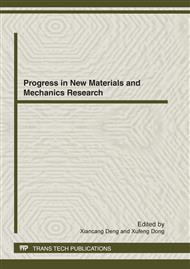p.397
p.402
p.407
p.412
p.416
p.421
p.426
p.431
p.436
Spin Injection in a Ferromagnetic/Organic System
Abstract:
Spin injection efficiency in the ferromagnet/ organic semiconductors system (FM/OSEs) was explored considering the spin dependence of the electric-conductivity induced by spin injection in the OSEs. It is known that the OSEs is spin polarized, once spin was injected from FM layer to OSEs layer. The up-spin polarons and the down-spin polarons have different density. The spin dependence of the electric-conductivity is so induced. In the literature, it was usually supposed that the electric-conductivity in the spin polarized OSEs is spin independent. So, it is crucial to reflect the physics in the spin injection. Our work shows that the spin-dependent electrical-conductivity is one of the significant factors which affect the spin injection efficiency. The spin injection efficiency increases obviously with the rising of the spin-dependent electrical-conductivity in the same spin injection system. And the effect becomes larger, when the polaron proportion increases. Furthermore, the effects of interfacial electrochemical-potential proportion on the spin injection efficiency in the heterojunction are also included.
Info:
Periodical:
Pages:
416-420
Citation:
Online since:
April 2012
Authors:
Price:
Сopyright:
© 2012 Trans Tech Publications Ltd. All Rights Reserved
Share:
Citation:


